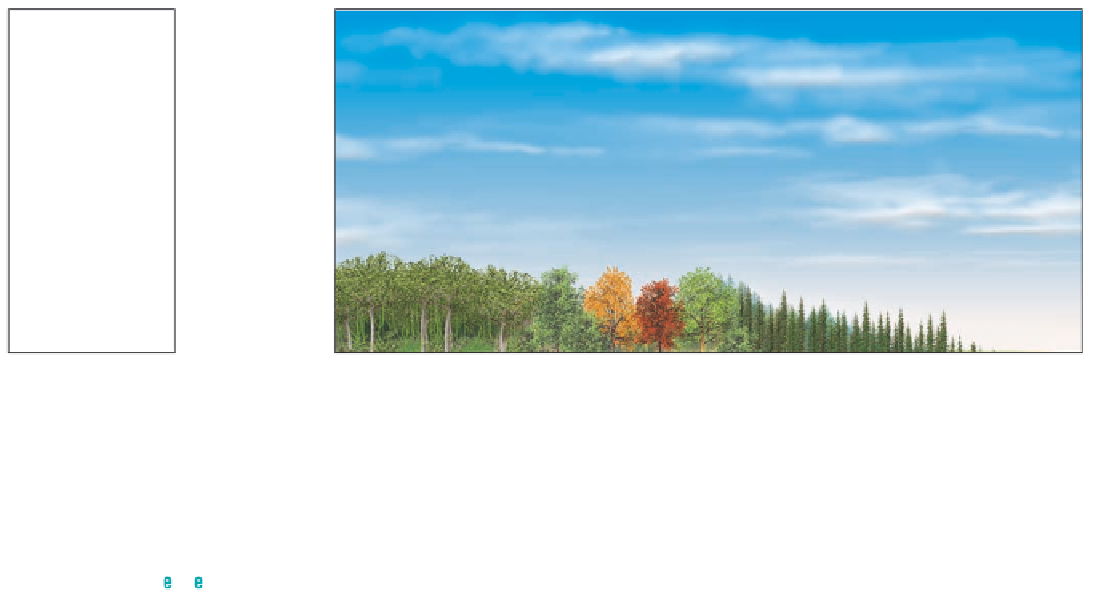Environmental Engineering Reference
In-Depth Information
Altitude
Mountain
ice and snow
Tundra (herbs,
lichens, mosses)
Coniferous
Forest
Deciduous
Forest
Latitude
Tropical
Forest
Tropical
Forest
Deciduous
Forest
Coniferous
Forest
Tundra (herbs,
lichens, mosses)
Polar ice
and snow
Figure 5-9
Natural capital:
generalized effects of altitude (left) and latitude (right) on climate and biomes.
Parallel changes in vegetation type occur when we travel from the equator to the poles or from lowlands to
mountaintops.
and low in winter and more precipitation falls than in
tropical deserts. The sparse vegetation consists mostly
of widely dispersed, drought-resistant shrubs and
cacti or other succulents, and animals are adapted to
the lack of water and temperature variations, as shown
in Figure 5-10 (p. 86). In
cold deserts,
such as the Gobi
Desert in China, winters are cold, summers are warm
or hot, and precipitation is low.
Figure 5-11 (p. 87) shows major human impacts on
deserts. Deserts take a long time to recover from dis-
turbances because of their slow plant growth, low
species diversity, slow nutrient cycling (because of
sparse bacterial activity in their soils), and lack of wa-
ter. Desert vegetation destroyed by livestock overgraz-
ing and off-road vehicles may take decades to grow
back.
Find a map showing all the world's biomes and zoom in for
details at Environmental ScienceNow.
5-3 DESERT AND GRASSLAND
BIOMES
Types of Deserts
Deserts have little precipitation and little vegetation
and are found in tropical, temperate, and polar
regions.
A
desert
is an area where evaporation exceeds precipi-
tation. Annual precipitation is low and often scattered
unevenly throughout the year. Deserts have sparse,
widely spaced, mostly low vegetation.
During the day, the baking sun warms the ground
in the desert. At night, most of the heat stored in the
ground radiates quickly into the atmosphere. Desert
soils have little vegetation and moisture to help store
the heat and the skies above deserts are usually clear.
This explains why in a desert you may roast during
the day but shiver at night.
A combination of low rainfall and different aver-
age temperatures creates tropical, temperate, and cold
deserts (Figure 5-8).
Tr opical deserts
are hot and dry
most of the year. They have few plants and a hard,
windblown surface strewn with rocks and some sand.
They are the deserts we often see in the movies.
In
temperate deserts,
such as the Mojave in southern
California, daytime temperatures are high in summer
Types of Grasslands
Grasslands have enough precipitation to support
grasses but not enough to support large stands of
trees.
Grasslands,
or
prairies,
are regions with enough aver-
age annual precipitation to support grass and, in some
areas, a few trees. Most grasslands are found in the in-
teriors of continents (Figure 5-7).
Grasslands persist because of a combination of
seasonal drought, grazing by large herbivores, and
occasional fires—all of which keep large numbers
of shrubs and trees from growing. The three main
types of grasslands—tropical, temperate, and polar
(tundra)—result from combinations of low average










